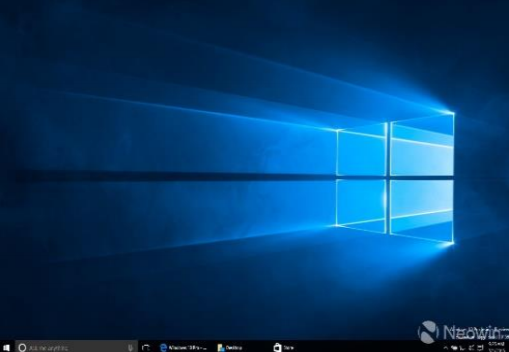2.2: Windows Desktop
- Page ID
- 13566

The Windows 10 desktop is the first workspace available to you after logging in to your computer. When logging in to a computer for the first time, you may see files (information that applications on your computer use to allow you to complete computing tasks), shortcuts, (icons that will send you to the actual file or application) folders, a place to consolidate files or the recycle bin (a folder that contains items you wish to delete). Some users prefer to keep their desktop uncluttered with none or only a few files that they are currently working on to appear, and others place many files in an unorganized fashion on their desktops. You will develop your own organizational systems as you become more comfortable with windows. There is also a keyboard shortcut to allow you to access the Desktop at any time when the computer is powered on. To perform this keyboard shortcut, simply press the Windows Key and the letter “D” on your keyboard at the same time. At the bottom left of the computer, the display is the Windows Start Menu, and the bottom of the computer display is the taskbar which will be discussed next.


